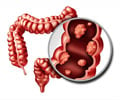Scientists at UT Southwestern Medical Center and nanotechnology experts from UT Dallas are testing a new way to selectively kill cancer cells by attaching cancer-seeking antibodies
A new way to kill cancer cells by attaching cancer-seeking antibodies to tiny carbon tubes is being tested out by scientists at UT Southwestern Medical Center and nanotechnology experts from UT Dallas. The new method causes cancer cells to heat up when exposed to near-infrared light.
Now, researchers can use biological molecules called monoclonal antibodies that bind to cancer cells. Monoclonal antibodies can work alone or can be attached to powerful anti-cancer drugs, radionuclides or toxins to deliver a deadly payload to cancer cells.For the study, they used monoclonal antibodies that targeted specific sites on lymphoma cells to coat tiny structures called carbon nanotubes, which are very small cylinders of graphite carbon that heat up when exposed to near-infrared light.
This type of light, which is invisible to the human eye, is used in TV remote controls to switch channels and is detected by night-vision goggles. Near-infrared light can penetrate human tissue up to about 11/2 inches.
The antibody-coated nanotubes are attached to the cells' surfaces in cultures of cancerous lymphoma cells. After exposing the targeted cells to near-infrared light, the nanotubes heated up, generating enough heat to essentially "cook" the cells and kill them. Nanotubes coated with an unrelated antibody neither bound to nor killed the tumor cells.
"Using near-infrared light for the induction of hyperthermia is particularly attractive because living tissues do not strongly absorb radiation in this range. Once the carbon nanotubes have bound to the tumor cells, an external source of near-infrared light can be used to safely penetrate normal tissues and kill the tumor cells," said Dr. Ellen Vitetta, director of the Cancer Immunobiology Center at UT Southwestern and senior author of the study.
She added: "Demonstrating this specific killing was the objective of this study. We have worked with targeted therapies for many years, and even when this degree of specificity can be demonstrated in a laboratory dish, there are many hurdles to translating these new therapies into clinical studies. We're just beginning to test this in mice, and although there is no guarantee it will work, we are optimistic."
Advertisements
"There are rational approaches to detecting and minimizing the potential for nonspecific toxicity of the nanoparticles developed in our studies," said Dr. Rockford Draper, leader of the team from UT Dallas and a professor of molecular and cell biology.
Advertisements
Source-ANI
RAS/L











